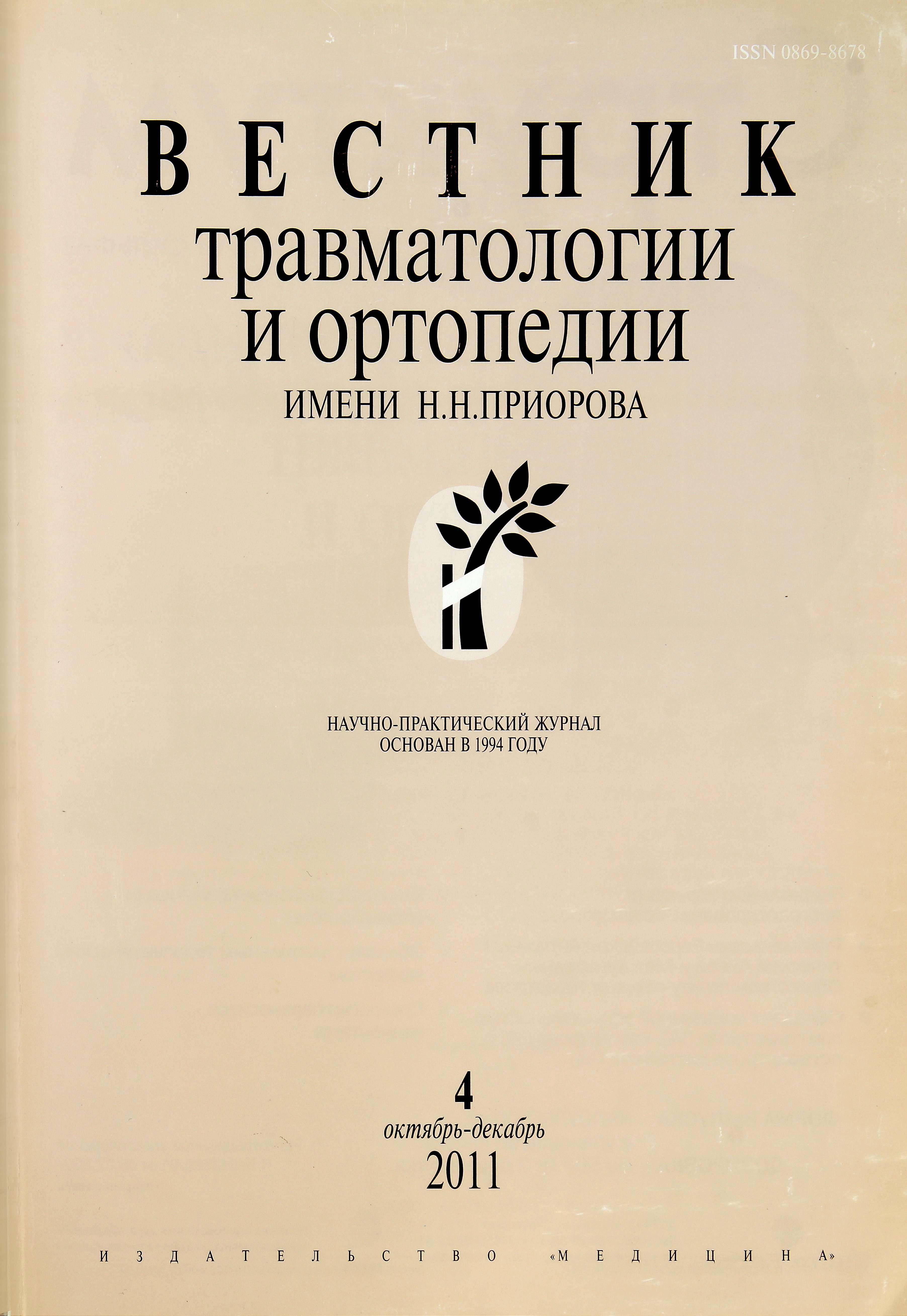Minimum Invasive Stabilizing and Decompressive-Stabilizing Methods of Surgical Treatment for Degenerative-Dystrophic Lesions of Spine
- Authors: Krut'ko AV1, Akhmet'yanov S.A.1, Kozlov DM1, Peleganchuk AV1, Bulatov AV1, Krut'ko AV1, Akhmet'yanov S.A1, Kozlov DM1, Peleganchuk AV1, Bulatov AV1
-
Affiliations:
- Issue: Vol 18, No 4 (2011)
- Pages: 3-10
- Section: Articles
- Submitted: 20.10.2020
- Published: 15.12.2011
- URL: https://journals.eco-vector.com/0869-8678/article/view/47796
- DOI: https://doi.org/10.17816/vto20111843-10
- ID: 47796
Cite item
Full Text
Abstract
About the authors
A V Krut'ko
Shamil' Al'firovich Akhmet'yanov
Email: Shamill@ngs.ru
D M Kozlov
A V Peleganchuk
A V Bulatov
A V Krut'ko
Sh A Akhmet'yanov
D M Kozlov
A V Peleganchuk
A V Bulatov
References
- Симонович А.Е., Козлов Д.М. Хирургическое лечение дегенеративных заболеваний поясничного отдела позвоночника у пациентов пожилого и старческого возраста //Хирургия позвоночника. - 2006. - N 3. - С. 52-58.
- Храпов Д.В. Сравнительная оценка методов хирургического лечения нестабильных повреждений грудного и поясничного отделов позвоночника: Дис. … канд. мед. наук. - Новосибирск, 2001. - С. 82-93.
- Bindal R.K., Glaze S., Ognoskie M. et al. Surgeon and patient radiation exposure in minimally invasive transforaminal lumbar interbody fusion //J. Neurosurg. Spine. - 2008. - Vol. 9. - P. 570-573.
- Foley K.T., Holly L.T., Schwender J.D. Minimally Invasive Lumbar Fusion //Spine. - 2003. - Vol. 28. P. 26-35.
- Foley K.T., Gupta S.K., Justis J.R., Sherman M.C. Percutaneous pedicle screw fixation of the lumbar //Neurosurg. Focus. - 2001. - Vol. 10, N 4. - P. E10.
- Foley K.T., Gupta S.K. Percutaneous pedicle screw fixation of the lumbar spine: preliminary clinical results //J. Neurosurg. - 2002. - Vol. 97 (1 Suppl). - P. 7-12.
- Foley K.T., Smith M.M. Microendoscopic discectomy //Tech. Neurosurg. - 1997. - Vol. 3. - P. 3017.
- Gejo R., Matsui H., Kawaguchi Y. et al. Spinal changes in trunk muscle performance after posterior lumbar surgery //Spine. - 1999. - Vol. 24. - P. 1023-1028.
- Kawaguchi Y., Matsui H., Tsuji H. Back muscle injury after posterior lumbar spine surgery: a histologic and enzymatic analysis //Spine. - 1996. - Vol. 21. - P. 941-944.
- Kazunori Y., Takashi S., Yosihisa K. et al. Indication of fusion for lumbar spinal stenosis in elderly patients and its significance //Spine. - 1996. - Vol. 21. - P. 242-248.
- Kim D.Y., Lee S.H., Chung S.K. et al. Comparison of multifidus muscle atrophy and trunk extension muscle strength: percutaneous versus open pedicle screw fixation // Spine. - 2005. - Vol. 30, N 1. - P. 123-129.
- Kim J.S., Choi W.G., Lee S.H. Minimally invasive anterior lumbar interbody fusion followed by percutaneous pedicle screw fixation for isthmic spondylolisthesis: minimum 5-year follow-up // Spine J. - 2010 . - Vol. 10, N 5. - P. 404-409.
- Magerl F. External skeletal fixation of the lower thoracic and the lumbar spine //Current Concepts of External Fixation of Fractures /Eds. H.K. Uhthoff, E. Stahleds. - New York, 1982. - P. 353-366.
- Mathews H.H., Long B.H. Endoscopy assisted percutaneous anterior interbody fusion with subcutaneous suprafascial internal fixation: Evolution of technique and surgical considerations //Orthopaedics. - 1995. - Vol. 3. - P. 496-500.
- McLaughlin M.R., Haid R.W., Rodts G.E. Posterior lumbar interbody fusion: indications, techniques, and results //Clin. Neurosurg. - 2000. - Vol. 47. - P. 514-527.
- Styf J.R., Wilen J. The effects of external compression by three different retractors on pressure in the erector spine muscles during and after posterior lumbar spine surgery in humans //Spine. - 1998. - Vol. 23. - P. 354-358.
- Thomsen K., Christensen F.B., Eiskjaer S.P. et al. 1997 Volvo Award winner in clinical studies. The effects of pedicle screw instrumentation on functional outcome and fusion rates in posterolateral lumbar spinal fusion: a prospective, randomized, clinical study //Spine. - 1997. - Vol. 22. - P. 2813-2822.
- Toyoda H., Nakamura H., Konishi S. et al. Clinical outcome of microsurgical bilateral decompression via unilateral approach //Spine. - 2011. - Vol. 36, N 5. - P. 410-415.
- Weber B.R., Grob D., Dvorak J. et al. Posterior surgical approach to the lumbar spine and its effect on the multifidus muscle //Spine. - 1997. - Vol. 22, N 15. - P. 1765-1772.
- Park Y., Ha J.W. Comparison of one-level posterior lumbar interbody fusion performed with a minimally invasive approach or a traditional open approach MD //Spine. - 2007. - Vol. 32. - P. 537 -543.
Supplementary files







